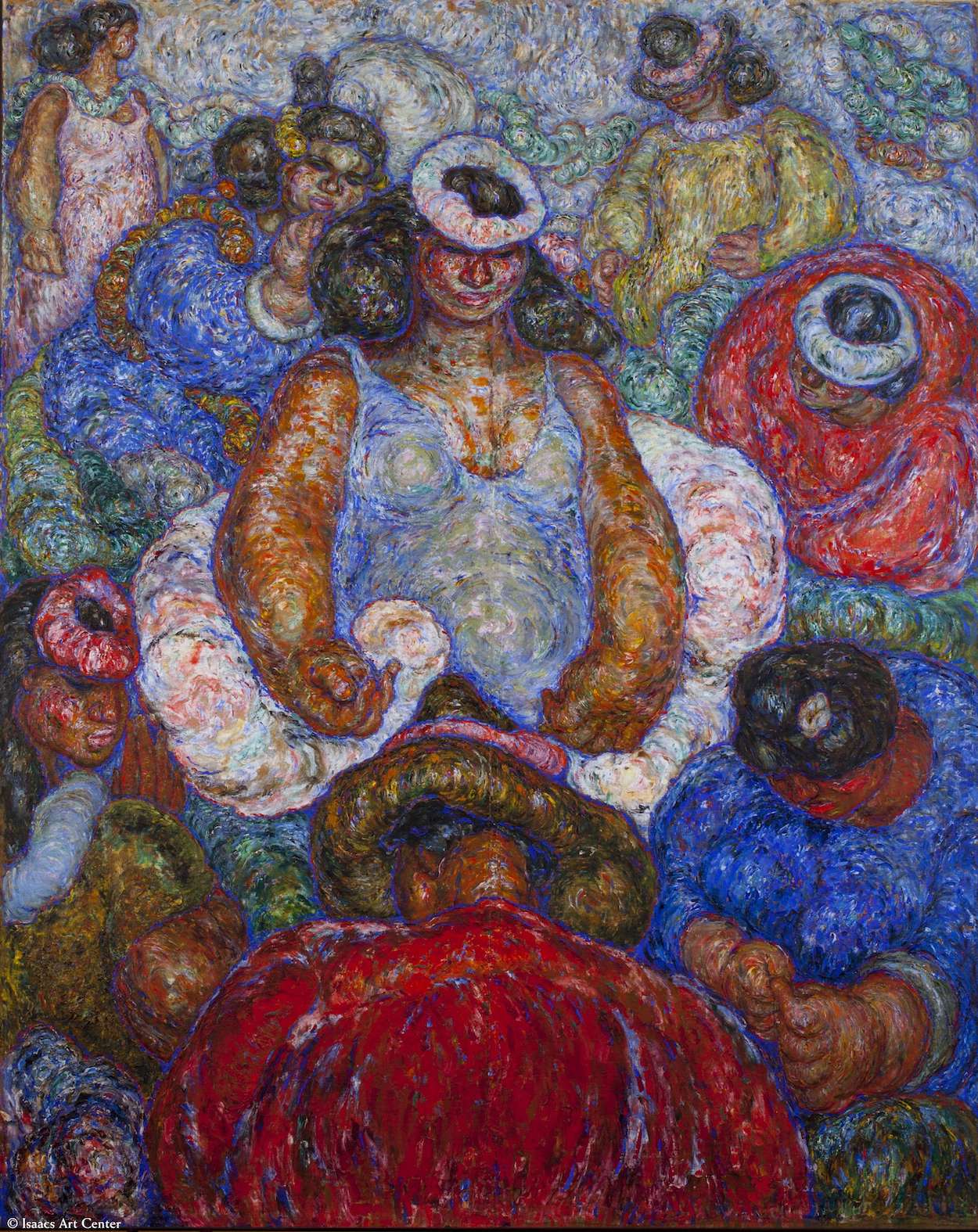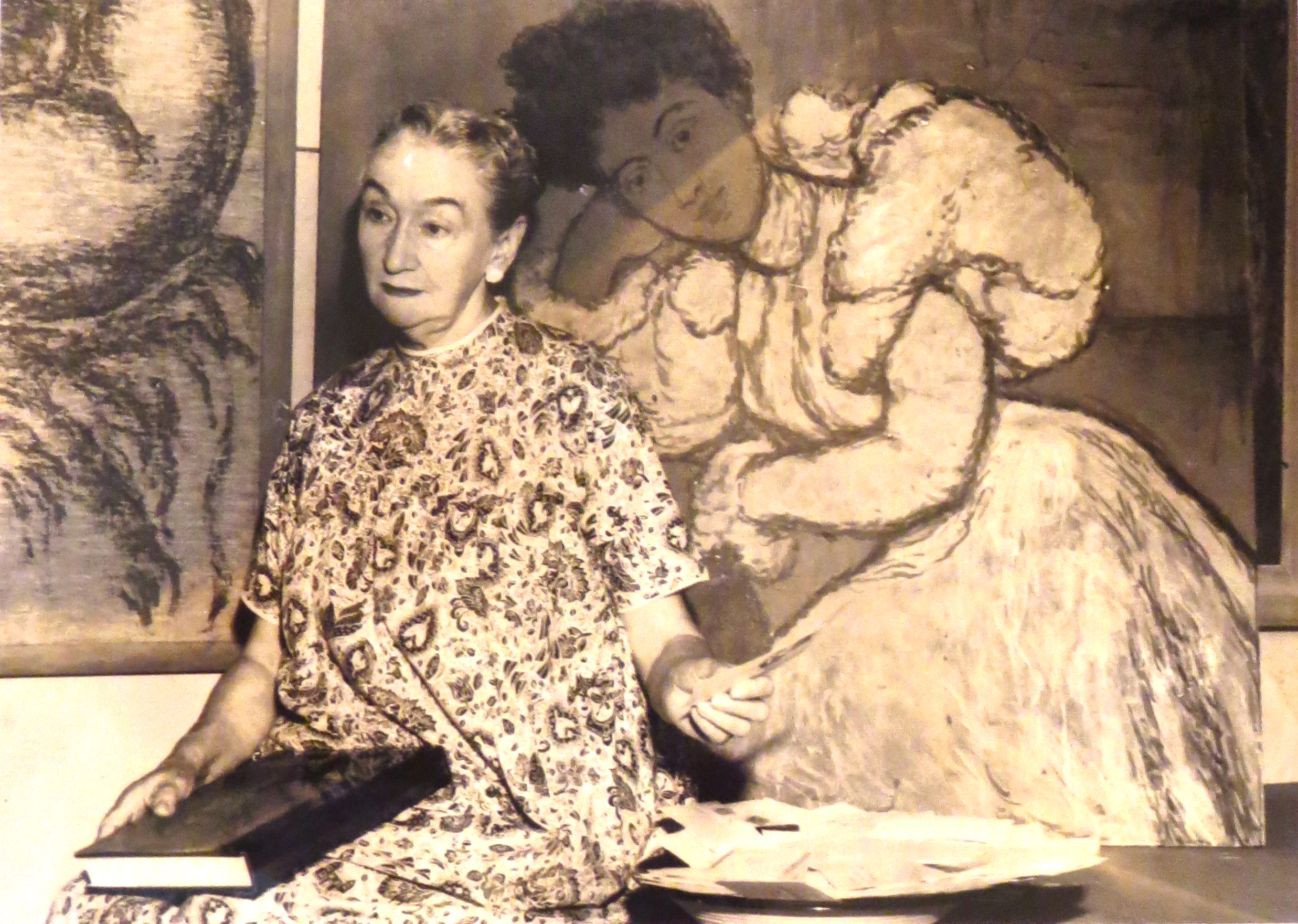We present today's painting thanks to Isaacs Art Center - thank you! <3
Writing for Paradise of the Pacific magazine in 1944, Madge Tennent all but explicitly invoked this painting to describe her beloved Hawaiian subjects: “Even the enveloping holoku cannot hide the small wrists, the curled back slender fingers and the columnar arm of even the largest lei woman. Her lifted arms, her wistful smile, the ember-like glow of her sunny flesh, are a perpetual and queenly benediction from one in an honored profession in the Islands possessing the most beautiful people of the world.” Expressed through the artist’s vibrant prism, these bodily traits define Lei Queen Fantasia, a towering embodiment (both literally and conceptually) of the unspoken strength and serene nobility that Tennent endeavored to capture for nearly five decades.
A critic once dubbed Tennent’s work an expression of “rhythm in the round,” an observation emphatically affirmed in this mural-sized painting. Its whirling brushstrokes, colors, and forms enact a ceremonial homage to nostalgic lyricism and mythic proportions. Seven curvaceous lei-makers orbit the majestic central figure, tending to her as they weave plumerias and tuberoses into the fragrant flower strands that have become world-famous symbols of Hawaii. Their eponymous queen seems to spring from the billowy lei encircling her, as if she too is a flower in bloom. She has somehow become the essence of the lei, a corporeal embodiment of “aloha.”
This fluid interplay between femininity and nature reflects Tennent’s conviction that Hawaiian women were the purest expression of the islands’ spirit. She perceived in them a certain mystical transcendence that manifests in both the composition and title of this ethereal work. Merriam-Webster defines “fantasia” as “a work in which the author’s fancy roves unrestricted,” and Tennent’s roving had culminated on a distant, uncharted shore of figural representation where amplitude and allure coalesce. Though international critics would soon reward this journey, several stunned locals went so far as to “prophesize a dire aesthetic end” to her career. By turns puzzled and amused, Tennent would later gleefully recount an occasion on which a heated debate over her ladies’ fleshy arms brought a society dinner party to an abrupt close.




Lei Queen Fantasia
oil on canvas • 244 x 198 cm
 Madge Tennent
Madge Tennent